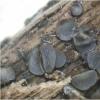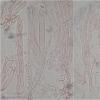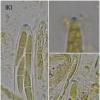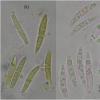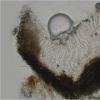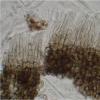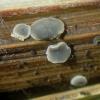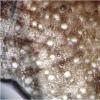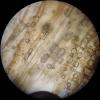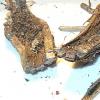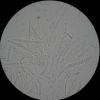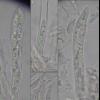
21-12-2025 21:32
Pol DebaenstHello, Garden, Burgweg 19, Veurne, BelgiumOn 10/1

22-12-2025 00:47
Patrice TANCHAUDBonsoir, récolte à proximité du milieu dunaire

21-12-2025 21:40
Isabelle CharissouBonjour, j'aimerais connaitre les références de

21-12-2025 21:31
Pol DebaenstHello, Garden, Burgweg 19, Veurne, BelgiumOn 10/1

21-12-2025 21:31
Pol DebaenstHello, Garden, Burgweg 19, Veurne, BelgiumOn 10/1

20-12-2025 23:08
Patrice TANCHAUDBonsoir, récolte sur sol sablonneux dans l'arri�

21-12-2025 09:32
Hello.A tiny ascomycete found embedded in wood in

20-12-2025 15:47
Mirek GrycHi.These grew on pine wood that was heavily covere
I collected these apothecia of grayish color in the hymenium and dark brown in excipulo.
The reaction with KOH is negative.
Asci are IKI + (blue). 68-75x6.5-7.5um size. Croziers +
Spores with a septum (difficult to distinguish in water, but visible in IKI).
Given the features mentioned, I think it may be mollisia humidicola. Can anyone confirm or refute the determination?
Thanks in advance, greetings
Susana

You have also nonseptate spores on your photos, those in which an "empty" space is in the middle (the nuclear region). When the oil drops are found in the centre then there is also a septum.
Tell me please what was the substrate, indet. grass?

could you please try to make a cross cut of the substrate where it is not too rotten, i.e., where a section is still possible? It must not be a microscopic section, but only a surface view on the wood. Wood is rather easily distinguished from herbs/monocots.
It would be a great surprize to see a species with siuch long, septate spores on ligenous substrate. The diameter of the piece seems to lie at about 15-20 mm, isn't it? There is no large grass with such thick base?
Zotto

Regards
Martin
Saludos

I assume the substrate is rather hard, is it? This section covers only about 2 mm of the centre, does it? How thick is the entire stem?
Ulmus seems completely excluded. Salix could be a possibility, but I would expect a parenchymatic inner region that I do not see here.
I do not want to bother you, but now that you got such a fine cross section, a radial section would be useful to see the pore perforations and the pits.
Zotto

Helpful would be to have a section through the 15 mm thick part. I assume this is difficult, but it is enough to know whether the interior is hollow, and how thick the wall. The surface looks rilled, does it?

That would fit to the substrate!
Zotto
Susana


Within dead asci the spores often remain alive and finally develop a septum or become brown etc.
You did not make a water preparation of the fresh fungus without applying much pressure? Then we could also see the living paraphyses.

The asci are completely dead. Living asci look very different , much wider. If you had dried the sample then no wonder when you find mainly dead elements. Asci are most sensitive to drying.
Saludos
Susana

